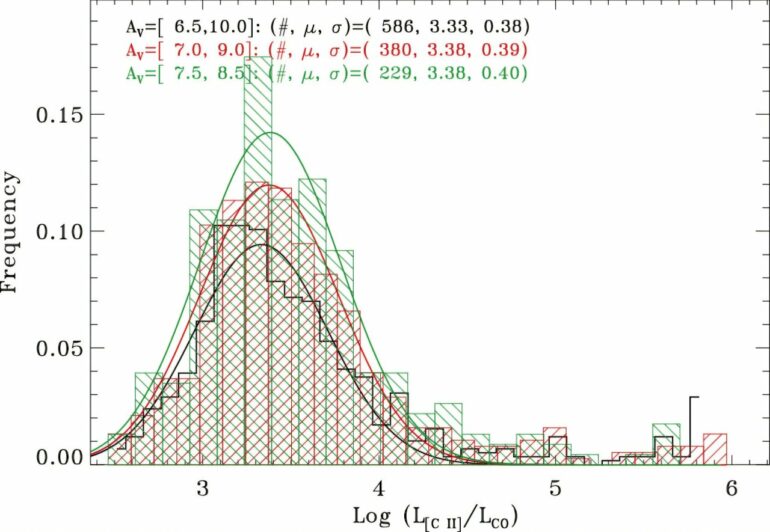Prof. Zhao Yinghe from the Yunnan Observatories of the Chinese Academy of Sciences, along with collaborators, have conducted a study examining the correlation between the [C II] 158 micron emission and the CO(1-0) line. Their findings were published in The Astrophysical Journal.
Molecular gas (H2) plays a critical role in star formation, a key factor in the evolution of galaxies. Therefore, measuring the gas content in galaxies is crucial. However, the traditional tracer for H2 mass, the CO(1-0) line, is challenging to detect in the early universe due to various factors, including lower metal content.
As a result, there is a pressing need for alternative H2 tracers, especially as more galaxies at high redshifts are being discovered.
In recent years, the [C II] 158 micron emission has emerged as a promising tool for investigating the gas content in the distant universe. However, earlier studies have lacked a consistent methodology and a diverse dataset that covers a wide range of parameters. This has hindered the validation of the effectiveness and reliability of [C II] 158 micron emission as a tracer for total molecular gas.
To address this gap, the researchers analyzed a sample of around 200 local galaxies and high-redshift galaxies (32 sources with a redshift greater than 1) that have very different physical conditions.
They discovered a strong linear relationship between the luminosities of the [C II] and CO(1−0) lines, confirming that [C II] can effectively trace the total molecular gas mass. There is a slight difference between ultra-luminous infrared galaxies and less-luminous galaxies.
The researchers also suggest that this relationship is likely influenced by the average value of the observed visual extinction and the range of the far ultraviolet intensity-to-gas density ratio in galaxies.
Through further investigations, the researchers discovered that the [C II]/CO ratio is closely related to several properties of galaxies. These properties include the surface density of infrared luminosity, the distance from the main sequence, and the proportion of [C II] emission originating from ionized gas.
These findings suggest that caution should be exercised when using a constant [C II]-to-H2 conversion factor to estimate H2 mass, especially in extreme cases, such as galaxies with low star formation activity or those with high star formation surface density.
More information:
Yinghe 应和 Zhao 赵 et al, Ionized Carbon in Galaxies: The [C ii] 158 μm Line as a Total Molecular Gas Mass Tracer Revisited, The Astrophysical Journal (2024). DOI: 10.3847/1538-4357/ad8c3e
Provided by
Chinese Academy of Sciences
Citation:
New method traces molecular gas mass in distant galaxies (2024, December 31)



